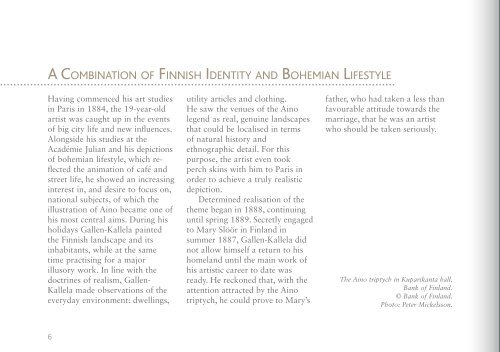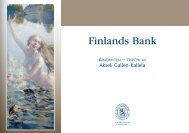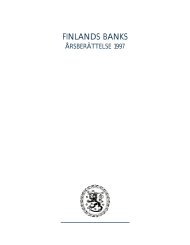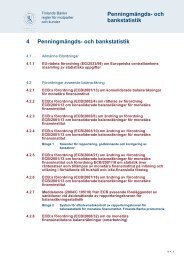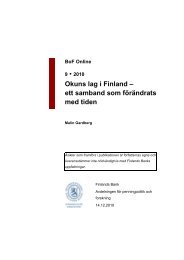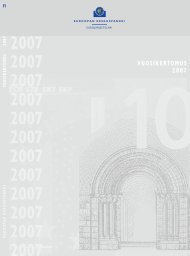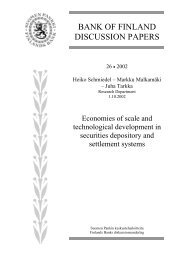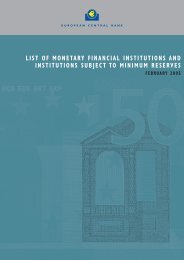Akseli Gallen-Kallela - Suomen Pankki
Akseli Gallen-Kallela - Suomen Pankki
Akseli Gallen-Kallela - Suomen Pankki
You also want an ePaper? Increase the reach of your titles
YUMPU automatically turns print PDFs into web optimized ePapers that Google loves.
A Combination of Finnish Identity and Bohemian Lifestyle<br />
Having commenced his art studies<br />
in Paris in 1884, the 19-year-old<br />
artist was caught up in the events<br />
of big city life and new influences.<br />
Alongside his studies at the<br />
Académie Julian and his depictions<br />
of bohemian lifestyle, which reflected<br />
the animation of café and<br />
street life, he showed an increasing<br />
interest in, and desire to focus on,<br />
national subjects, of which the<br />
illustration of Aino became one of<br />
his most central aims. During his<br />
holidays <strong>Gallen</strong>-<strong>Kallela</strong> painted<br />
the Finnish landscape and its<br />
inhabitants, while at the same<br />
time practising for a major<br />
illusory work. In line with the<br />
doctrines of realism, <strong>Gallen</strong>-<br />
<strong>Kallela</strong> made observations of the<br />
everyday environment: dwellings,<br />
utility articles and clothing.<br />
He saw the venues of the Aino<br />
legend as real, genuine landscapes<br />
that could be localised in terms<br />
of natural history and<br />
ethnographic detail. For this<br />
purpose, the artist even took<br />
perch skins with him to Paris in<br />
order to achieve a truly realistic<br />
depiction.<br />
Determined realisation of the<br />
theme began in 1888, continuing<br />
until spring 1889. Secretly engaged<br />
to Mary Slöör in Finland in<br />
summer 1887, <strong>Gallen</strong>-<strong>Kallela</strong> did<br />
not allow himself a return to his<br />
homeland until the main work of<br />
his artistic career to date was<br />
ready. He reckoned that, with the<br />
attention attracted by the Aino<br />
triptych, he could prove to Mary’s<br />
father, who had taken a less than<br />
favourable attitude towards the<br />
marriage, that he was an artist<br />
who should be taken seriously.<br />
The Aino triptych in Kuparikanta hall,<br />
Bank of Finland.<br />
© Bank of Finland.<br />
Photo: Peter Mickelsson.<br />
6


